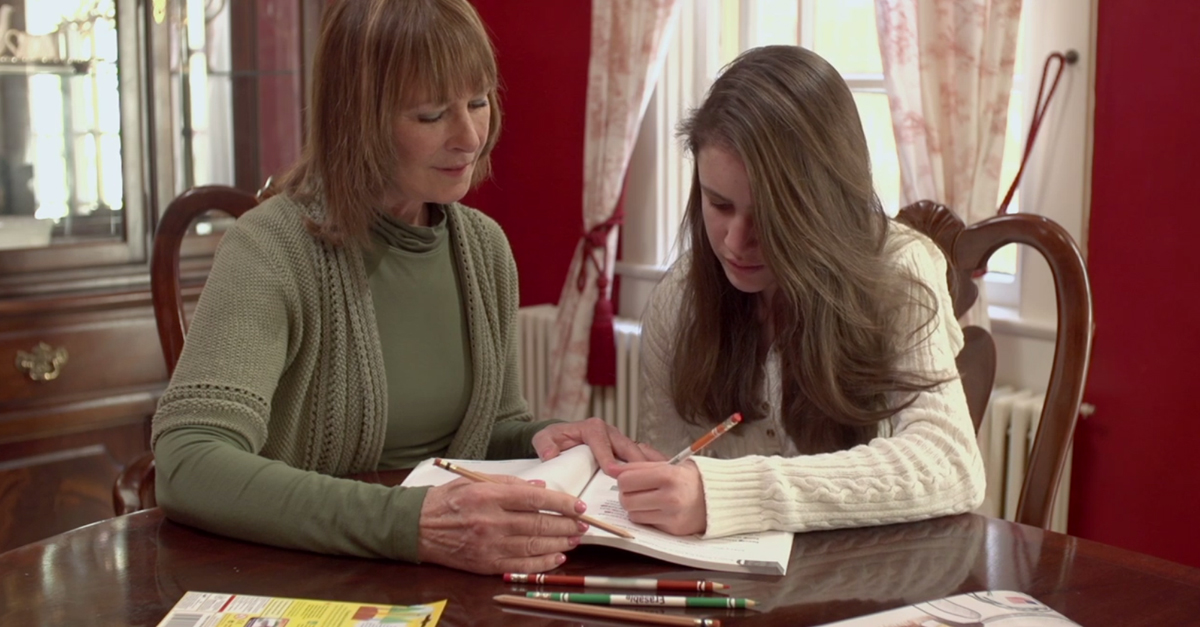Spelling You See: Not Just for Beginning Spellers

Some parents have asked whether Spelling You See is suitable for use with junior high and high school students who may read well but need more help with spelling. The answer is yes. Before beginning Spelling You See with an older student, however, it is important to understand how reading and spelling differ, how students are placed in the program, and how you can tailor the program to your individual student’s abilities.
Many students (and many adults) read well but struggle with spelling. It is important to recognize that reading and spelling are two distinct skills, each involving different types of mental processing. When reading, a student uses phonics and context together to recognize and pronounce words. When a student is attempting to spell familiar words, a knowledge of phonics provides valuable clues; however, a strong visual memory is also required in order to apply the phonetic patterns correctly. Skilled readers see whole words or phrases at a glance, so they often fail to pay close attention to how individual words are spelled. The techniques presented in Spelling You See (repeated readings of the same passage, marking word patterns, and copywork) all encourage the student to notice the spelling of individual words. Because these activities take place in the context of a meaningful paragraph rather than a list of words, correct spelling is more likely to become part of the student’s long-term memory.
Correct placement is the key to using Spelling You See effectively with any student. There are descriptions of all of the levels on the Spelling You See website. The topics of the practice paragraphs in Americana through Modern Milestones are designed to be interesting to people of all ages, and the progression of skills between and throughout the levels is gradual, providing flexibility in choosing the correct place to begin. No matter which level is chosen, the student should be able to read the passages easily so that he can focus on spelling.
Americana, American Spirit, and Ancient Achievements are all intended for students in the Skill Development stage of spelling. The goal is to master an increasing vocabulary of everyday words. Ancient Achievements begins the transition from the Skill Development stage to the Word Extension stage by adding a “Spotlight” feature to each lesson. This “Spotlight” introduces facts about word history and structure, along with optional activities. Students who can spell most common words but get tripped up with plurals, prefixes, and suffixes are probably in the Word Extension stage of spelling and should begin with Modern Milestones. This level introduces a new technique for marking words and a “Workshop” page for practicing skills. Use the Readiness Guidelines to choose the best level for your student.
Some elements of the Spelling You See program may be adapted when working with older students. For example, if the first dictation page is completed without errors, it is not necessary to have the student write the second dictation. Some students will not need to complete all three copywork pages, but, in most cases, the repeated practice in writing the passages is critical for long-term memory. Older students will be able to work more independently than elementary students (except for dictation, of course); the parent should continue to monitor the student’s progress closely, however.
An understanding of the reading and spelling processes, careful placement, and a willingness to move at the student’s pace are keys to success when using Spelling You See with any age. Don’t be surprised if you find your older student looking at the English language in a completely different way after using this program.